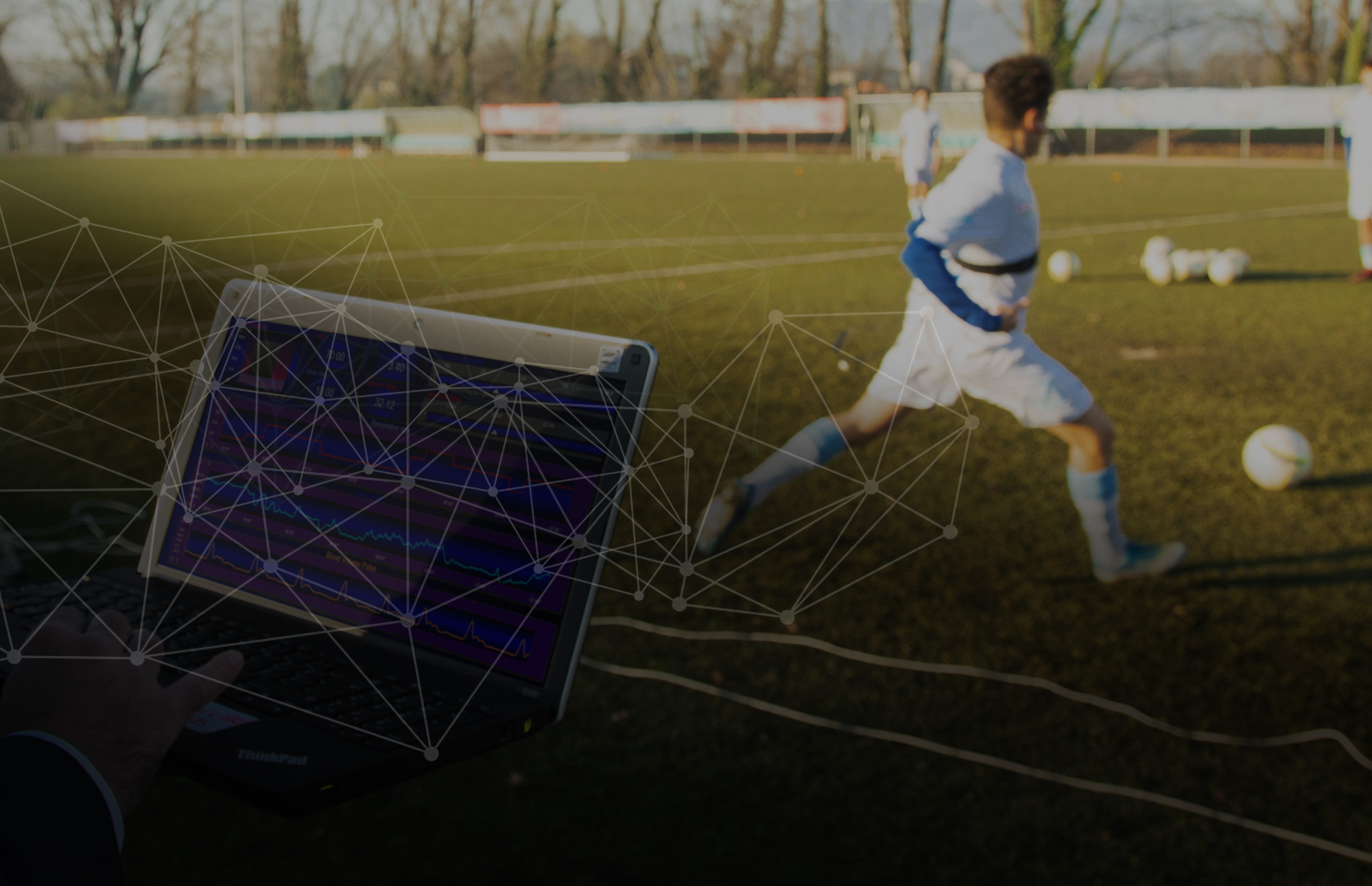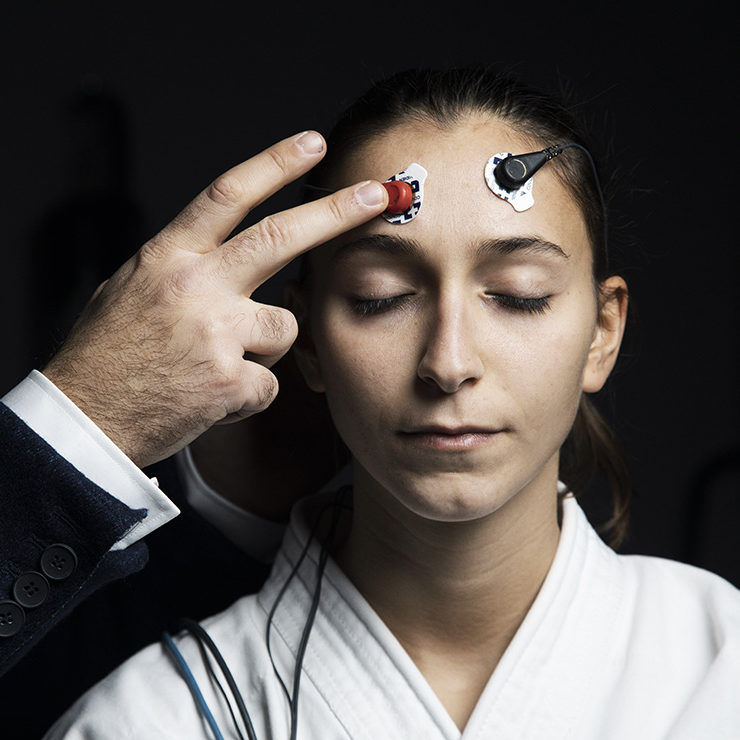
“How the neuropotentiation process works
with the Rusciano Neuroplus method "



In the first phase of assessment, an accurate check-up of the athlete or team is carried out to assess the state of cognitive health and identify the areas on which to act the neuropotentiation. The check-up is carried out with the use of neurotechnologies, wearable devices that allow to measure the 'cerebral' efficiency according to specific markers. Through an evaluation with electrophysiological techniques, the electroencephalographic parameters (EEG), neurocognitive performance (reaction times), stress response (EDA), respiratory, cardiac (HR), muscle (EMG), body temperature and vasodilator parameters are analyzed. various conditions, highlighting the areas on which to act with neuropotentiation. At the same time, a psychological analysis of the person's personal constructs takes place, that is, how the person represents himself and gives meaning to choices, relationships and the world around him. Neurophysiological metrics - sport brain analytics - make it possible to measure, starting from cerebral, cognitive and physiological signals, the processes that take place, in the player or in the team at an unconscious level, identifying with artificial intelligence the potential not yet expressed at which it is not yet can be accessed using traditional verification methods based on the statistical analysis of the player's performance, verbal interviews or questionnaires.
The Neuropotentiation intervention is carried out with neuro-technologies and has the aim of increasing the ability to concentrate in situations of high stress, recovery and injury prevention. This occurs through the strengthening, stimulation and activation of specific circuits such as the prefrontal network and cardio-respiratory self-regulation capacity. The intervention with the Rusciano Neuroplus method is intensive and can generally require from 5 to 20 intensive sessions, depending on the objectives and the neuropotentiation program agreed with the athlete and / or the team and in relation to the person's response to the treatment.
From 2020, check up and training interventions can also be carried out remotely with tests and exercises that arrive directly on PC, Smarthpone, Tablet.
Electroencephalogram (EEG) & Evoked Potentials (ERP) : to monitor mental activity, mental load, attention span, focus, recovery, intuition, problem solving, memory and sensory processes.
Electrocardiogram to measure HR & HRV : quantifies cardiac load, recovery, psychophysical involvement.
Electrodermal Activity (EDA) : measures the level of stress and stress / recovery responses.
Electromyography : quantifies muscle tone and activity in specific muscle segments.
Thermistor and photoplethysmograph : Measures temperature (Temp) and BVP, evaluates the flow of vasodilation and vasoconstriction.
Capnogrfia : measures breathing in conditions of loading, unloading, sleep activation and recovery.
Neurofeedback : technique that allows the subject to be taught how to modulate their cognitive activity, observing the representation of the latter in real time.
Biofeedback : technique similar to neurofeedback with which it is possible to learn to modulate the physiological levels of which we usually do not perceive the alteration, underlying cardiac reactivity, muscle conicity control, breathing and stress response.
TDCS : (direct current transcranial stimulation), born in Italy and now used all over the world, is an easy to apply technique with which it is possible to stimulate different parts of the brain in a non-invasive, effective, painless way and without significant side effects. This technique, through the flow of current from one electrode to the other, modifies the membrane potentials of neurons allowing to modulate the excitability of the cerebral cortex and therefore the neuronal activity of the brain, increasing or decreasing the functionality of the stimulated area ( producing effects on a cognitive and behavioral level) for a time that lasts beyond the duration of the stimulation.

The prefrontal cortex which has reciprocal connections with all sensory and motor systems, both cortical and subcortical. Executive functions are linked to learning new experiences, planning, control, decision making, learning new behaviors, actions aimed at a purpose. The dorsolateral cortex comprises the lateral portions of the hemisphere on which strategic behavior, planning, abstraction, cognitive flexibility, and working memory depend.
The prefrontal ventromedial cortex, as evidenced in numerous neuroimaging studies, would be activated when the individual has to make a decision in the absence of a lot of external information, so he has to make decisions based more on sensation than on logical consequences.
Stress response and regulation of the autonomic nervous system The autonomic nervous system (ANS), also known as the vegetative nervous system, is responsible for the functions of organs that are beyond voluntary control (such as the heart, stomach and intestines) and some muscles. From authoritative and solid scientific studies, it emerges that pathological states of stress, insomnia, depression, panic attacks, inflammation and declines in cognitive performance are related to dysfunctions of the autonomic nervous system. From brain imaging studies and the research of Prof. Rusciano and colleagues, neurpotentiation increases the ability to self-regulate karst and respiratory activity, increases the flexibility of the autonomic nervous system, enhancing stress management, self-control and psychophysical recovery.

The person, in the phases of the path, proceeds with an analysis of the experience in order to be more aware of a series of psychological meanings that he uses to interpret events. This procedure is based on the psychological analysis of subjective experience and observation of oneself and others.